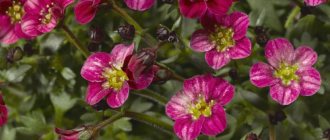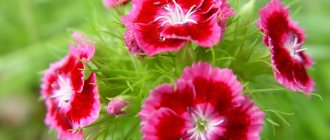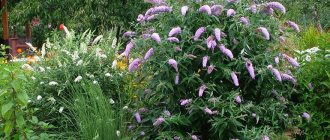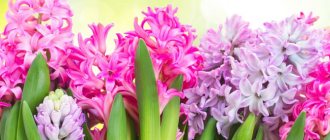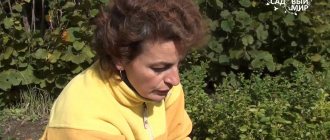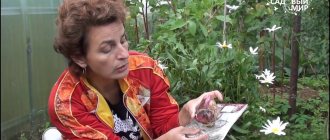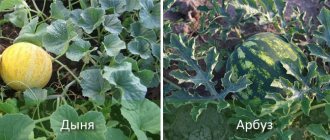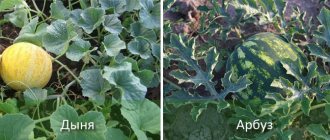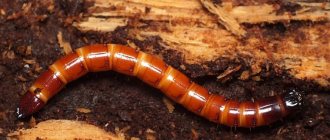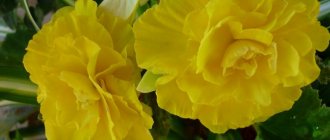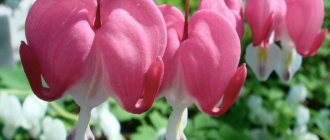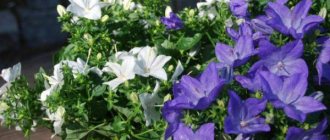This flower easily tolerates life in the shade and retains its fresh appearance after wintering under the snow. Centuries ago, such vitality brought him fame as a magical plant. Today, periwinkle is loved in landscape design due to the same qualities - unpretentiousness and the ability to create a beautiful carpet in shaded areas.
In a forest clearing Source st3.depositphotos.com
Beneficial properties of periwinkle
The medicinal properties of periwinkle have been known for a long time, and it is successfully used in folk medicine. Currently, after studying the medicinal qualities of the plant, which has anti-inflammatory, hypotensive, hemostatic and astringent effects, it has been actively used in pharmacology.
The following were found in the culture:
- ascorbic and succinic acid;
- carotene;
- tannins;
- more than 25 alkaloids (vincamine, vinkatone, vincristine, vincapane, devincan, minorin and others).
The medicinal qualities of periwinkle include:
- expansion and strengthening of blood vessels, increasing their elasticity;
- strengthening the immune system and heart muscle;
- normalization of cerebral circulation;
- antitumor, antiseptic and sedative effect;
- decreased blood pressure and increased heart rate;
- pain relief from migraines and headaches;
- elimination of dizziness;
- improvement in vegetative-vascular dystonia, diseases of the gastrointestinal tract, skin diseases, rheumatism and a number of other pathologies.
Important! Since vinca alkaloids are toxic, self-medication with products made from the plant is strictly prohibited.
If the dosage is exceeded, serious allergic reactions are possible. Contraindications for the use of such drugs are: pregnancy, lactation, children under 12 years of age, as well as in the presence of serious diseases of various etiologies in the acute stage.
Pest and disease control
Periwinkle is so unpretentious that it almost never gets sick. Very rarely it is affected by two fungal diseases - powdery mildew or rust. They are easy to identify by their white coating and red spots, respectively. Treatment and prevention require complex fungicides and timely thinning.
There are also almost no problems with insects and pests, because periwinkle is poisonous to them. The only parasite that can live in such a flower carpet is scale insects. They have a strong shell, so we recommend immediately using professional insecticides.
Photo: agroklassiksnab.ru
Columnar apple tree: varieties, care and cultivation (photo)
Culture propagation
There are several classic ways to propagate a plant:
- cuttings;
- layering;
- dividing the bush;
- seeds.
Cuttings
Cuttings are the simplest and most common way to propagate periwinkle. Almost any time is suitable for this process - from early spring to autumn, excluding the flowering period.
As planting material, you can use both semi-lignified sections of the stem near the root and shoots in the upper part. The best option is considered to be branches whose internodes show signs of root development. Although even without them, the shoots take root well.
As a rule, 2-3 internodes and a couple of leaves are left on the cuttings. Experienced gardeners recommend preliminary rooting of such shoots in a specially designated place with light, nutritious soil and controlled watering. After the formation of roots of normal size, young periwinkles are transplanted to a permanent place. It is possible to plant cuttings immediately without prior germination.
By layering
In mature plants with long shoots, the rooting process occurs at the points of contact with the ground. A rooted shoot is a shoot.
To speed up the process, you need to select a long healthy stem, sprinkle it with soil in the places where internodes are present and secure it in several places (for example, with a metal bracket).
After the root has formed, the cuttings are cut off with a clean garden tool (scissors, pruning shears) from the mother plant and, depending on the state of the root system, they are immediately planted in open ground or sent for growing (similar to cuttings).
Dividing the bush
This procedure can be carried out at any time of the year, except winter and is not advisable during the flowering period. A healthy bush is dug up, and its root system is cleared of soil and rotten roots.
Division (with a clean instrument) is carried out in such a way that each part contains a renewal bud and a section of the main rhizome.
To speed up the adaptation process, it is advisable to plant the “divisions” in a soil mixture of the same composition as the main bush and systematically water it.
Seeds
Periwinkle propagation is also possible by seed, although this process is more labor-intensive. In this case, the seeds can be planted directly in the ground, as well as pre-planted as seedlings. A crop grown from seeds will bloom only the next year.
Growing seedlings is classic. Containers (boxes, containers or others) with a fertile mixture consisting of turf soil, peat and sand, taken in equal proportions, are prepared in advance. The seeds are placed in a depression of 1.5-2 cm with a distance of 3 cm between them. Then this container is covered with film to create a greenhouse effect and placed in a warm place, out of direct sunlight. In this case, the film is periodically removed for ventilation and moistening.
After the sprouts appear, the film is removed and the seedlings are placed in cooler conditions with a temperature of +18-20°C and good lighting. Further care consists of systematic watering using a spray bottle. If the seedlings are weak, then 3 weeks after the first shoots they can be fed with a weak solution of fertilizers.
When four leaves appear, a pick is made, planting the periwinkles in individual containers (cups or small pots). 2-3 weeks before the intended planting in the ground, the plants begin to harden with a gradual increase in the time spent in the air.
general information
Periwinkle is a ground cover plant and can be creeping or climbing. It has shiny, leathery leaves, from the axils of which appear simple but very delicate flowers of five petals.
Periwinkle has thin but numerous shoots that spread in all directions. They take root themselves, because each node can send out its own roots. Periwinkle blooms in the spring, but individual flowers can be seen until autumn. And there are evergreen varieties that are not afraid of either snow or heat.
Periwinkles are grown in any way you like: in flower beds, instead of decorative dividers, and even instead of a mulch layer around trees. They are ideal for alpine slides, but will grow even in hanging flowerpots. This is also a surefire way to get rid of other more dangerous weeds in the garden.
Photo: elot.ru
Use in landscape design
Periwinkle in landscape design is attractive due to its ability to grow in shaded areas. It is often used to decorate space under large trees . It is also suitable for improving and strengthening slopes on the site.
Vinca is planted in flower beds together with bulbous plants . Alpine slides also decorate it with a thick carpet. The variegated appearance of the plant looks especially impressive in such a composition. This is what periwinkle looks like in landscape design (photo).
general description
In Latin, the name of the plant sounds like Vinca, which means “creeping”. It belongs to the Kutrov family .
The main habitat is Europe and Asia, some species are found in North Africa. Popularly, periwinkle has succinct names: “witch’s violet”, “flower of love” .
It is a ground cover flower with leathery leaves. Depending on the variety and place of growth, they can be colored in light and dark green shades.
Today, varieties with variegated leaves have also been bred. Its flowers are simple in shape; the color scheme is dominated by lilac, blue, light blue and violet tones .
However, there are varieties, such as Periwinkle Burgundy Halo, with juicy red corollas.
Care
Periwinkle in garden design will not cause much trouble, since caring for it includes only a few simple rules:
- Watering. Additional moisture is needed only during the period of active growth, in the spring; the rest of the time there are enough natural reserves. Periodic watering will be required if the soil is sandy or the summer is particularly hot.
In composition with other flowers Source construyendo-puentes.org
- Trimming. Periwinkle is actively growing and quietly takes over the entire available territory, displacing its neighbors, so it needs restraining (and rejuvenating) pruning. It is carried out after the plant has flowered; as a result, the carpet will become more lush and neat.
- Feeding. For periwinkle, feeding is not a fundamental point, and you can do without it. But the flower will thank you with a beautiful carpet and abundant flowering if you fertilize the soil with urea (urea), humus, and peat compost.
Alba among the stones Source catalog.sadovod.org
Varieties
Representatives of the genus Periwinkle are found naturally in Eurasia and North Africa; The name hides perennial herbs and creeping shrubs. Based on four wild ancestors, decorative varieties that were loved by amateur gardeners were bred.
Garden favorites include Vinca major, with its largest leaves and flowers among its relatives. It blooms for about a month in May; possible repeated, shorter flowering in September. Decorative varieties include Reticulata and Variegata; their leaves are decorated with beautiful yellowish-white streaks.
Small periwinkle (Vinka minor) is a plant with creeping stems reaching a meter in length, with small, dense green leaves and blue flowers. This evergreen subshrub is characterized by moderate frost resistance and is divided into several varieties:
- Atropurpurea. A plant with violet-purple flowers. This periwinkle forms a dense cover in the landscape and grows well in shade and partial shade.
Atropurpurea Source emeraldplants.co.uk
- Alba. A plant with single white flowers up to 2.5 cm in diameter. The branched stem reaches a length of 60 cm, the leaves are dark green, shiny on the front side. Alba can grow in sunny areas, but prefers shade and partial shade, where it blooms longer (25-30 days, in May-June).
Alba Source i.pinimg.com
- Bowles Cunningham. The variety is characterized by sky-blue flowers and many neat shiny leaves. It can be planted in shaded areas, and it prefers moist and nutritious soil.
Bowles Cunningham Source img04.rl0.ru
- Periwinkle Variegata variegata. An evergreen perennial with light blue flowers and an elegant white border on the edges of the leaves.
Variegata variegata Source lh5.ggpht.com
- Gertrude Jekyll. A variety with white flowers and a stem up to 60 cm long. It tolerates frost well, but in a snowless winter it needs protection (it is enough to cover it with spruce branches).
Variety Gertrude Jekyll Source ss-bol.com
Herbaceous periwinkle is interesting for its blue, purple or blue-violet flowers. This variety was introduced from the Middle East region and popular varieties include First Kiss, Cascade and Grape Cooler. Herbaceous periwinkle is suitable for growing in the Moscow region and regions with similar climates. It suffers from frost more than others, so it requires especially careful winter shelter.
Herbaceous periwinkle Source avatars.mds.yandex.net
The pubescent periwinkle grows naturally in Primorye. The bush does not form as dense a covering as other varieties and sheds its leaves in the winter, but it tolerates frosts quite well. The flowers are small, dark blue.
Variety Blue and Gold Source www.delenka.ru
See also: Catalog of companies that specialize in designing and performing landscape work of any complexity
After flowering
After flowering, the periwinkle clearing does not lose its decorative effect, decorating the ground with a lush carpet.
The only thing that is required from the owner is to trim the protruding branches to give the planting a neat appearance . By the way, cut branches can be used as cuttings.
How and when to collect periwinkle seeds
Vinca flowering ends with the formation of seed pods. This usually happens in September. Considering that it blooms profusely and grows low, collecting seeds is long and difficult .
If you nevertheless decide to acquire seeds, carefully remove the boxes from the shoots, remove the seeds from them, dry them and put them in a fabric bag. Store in a cool and dry place .
